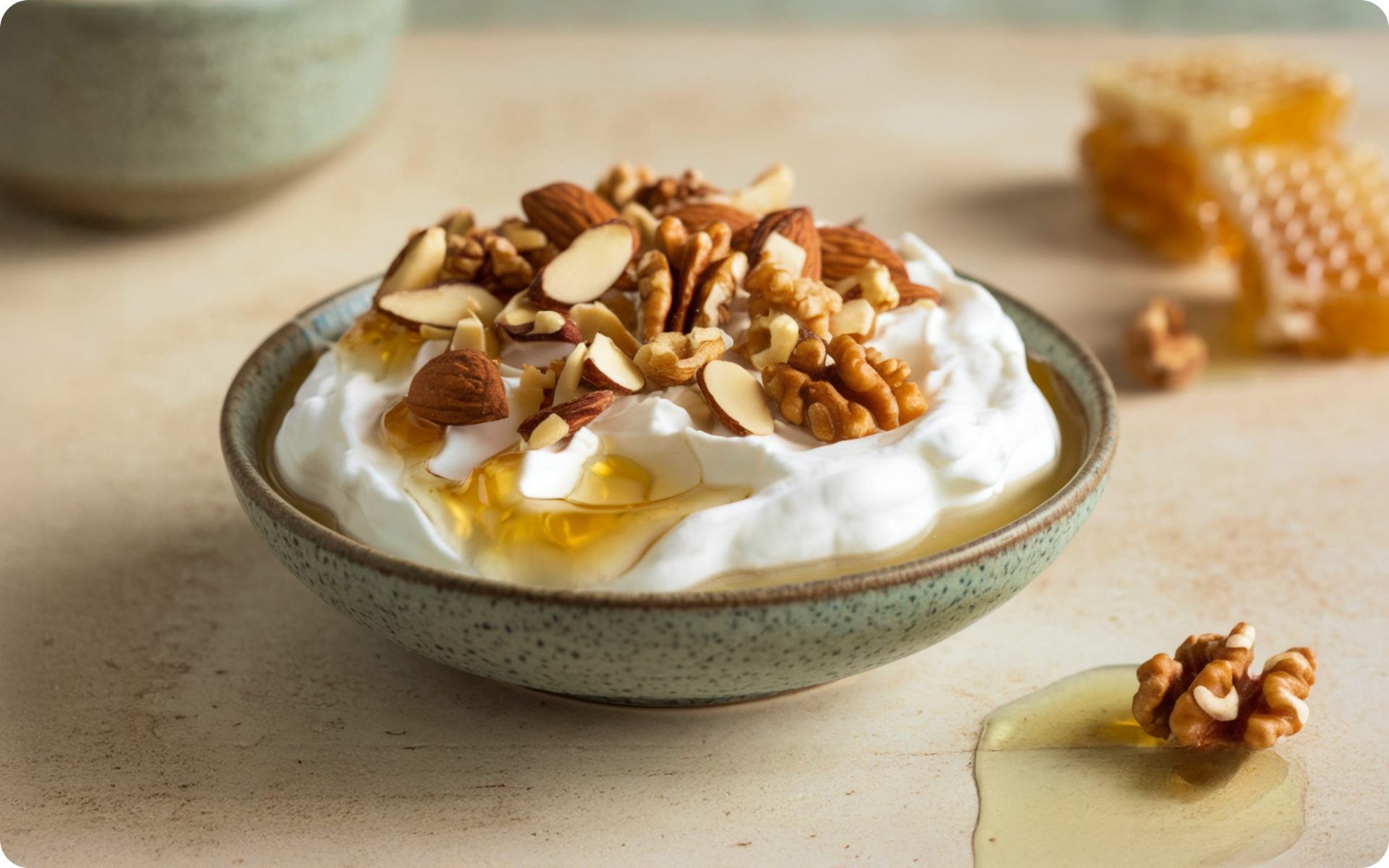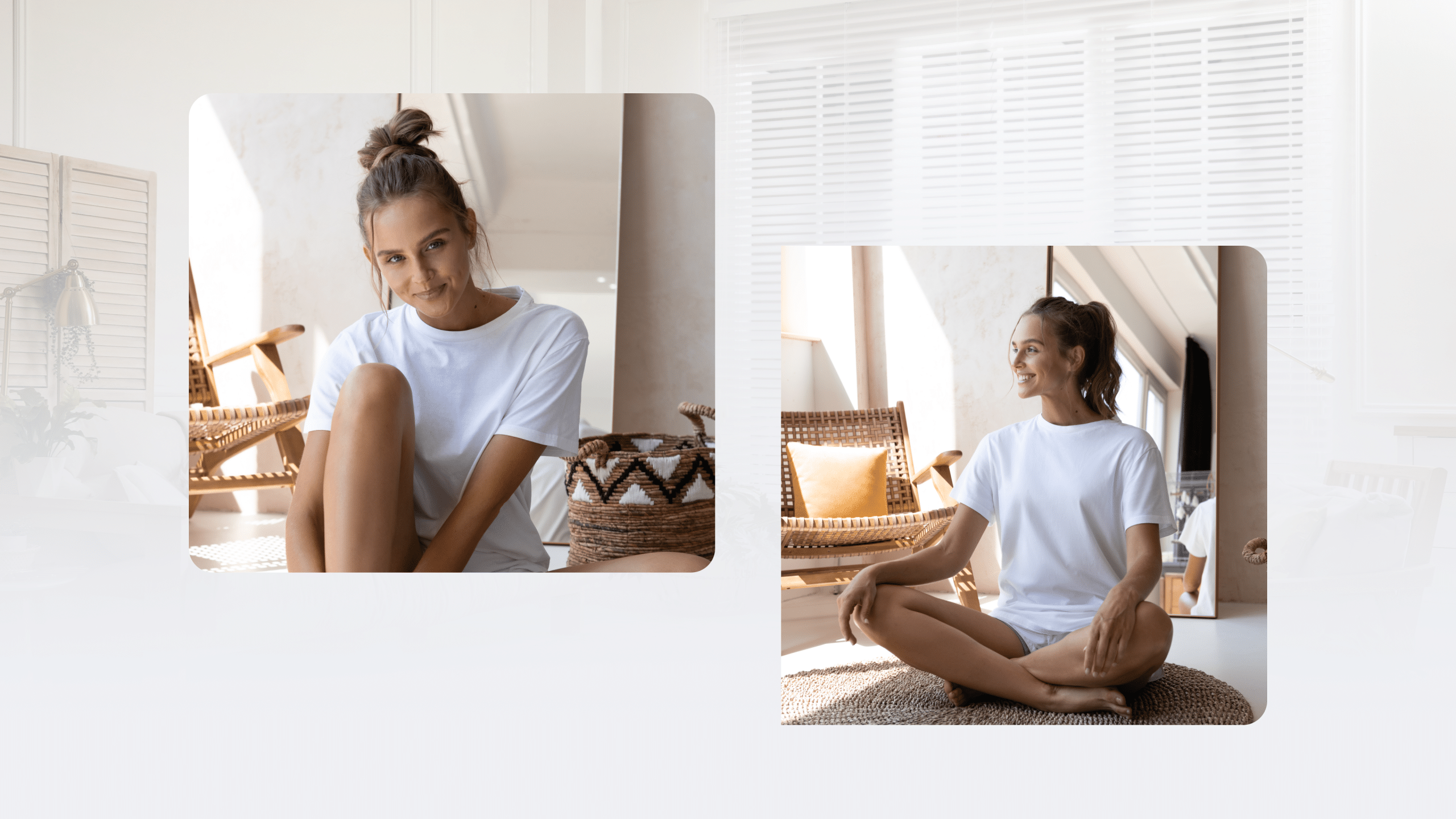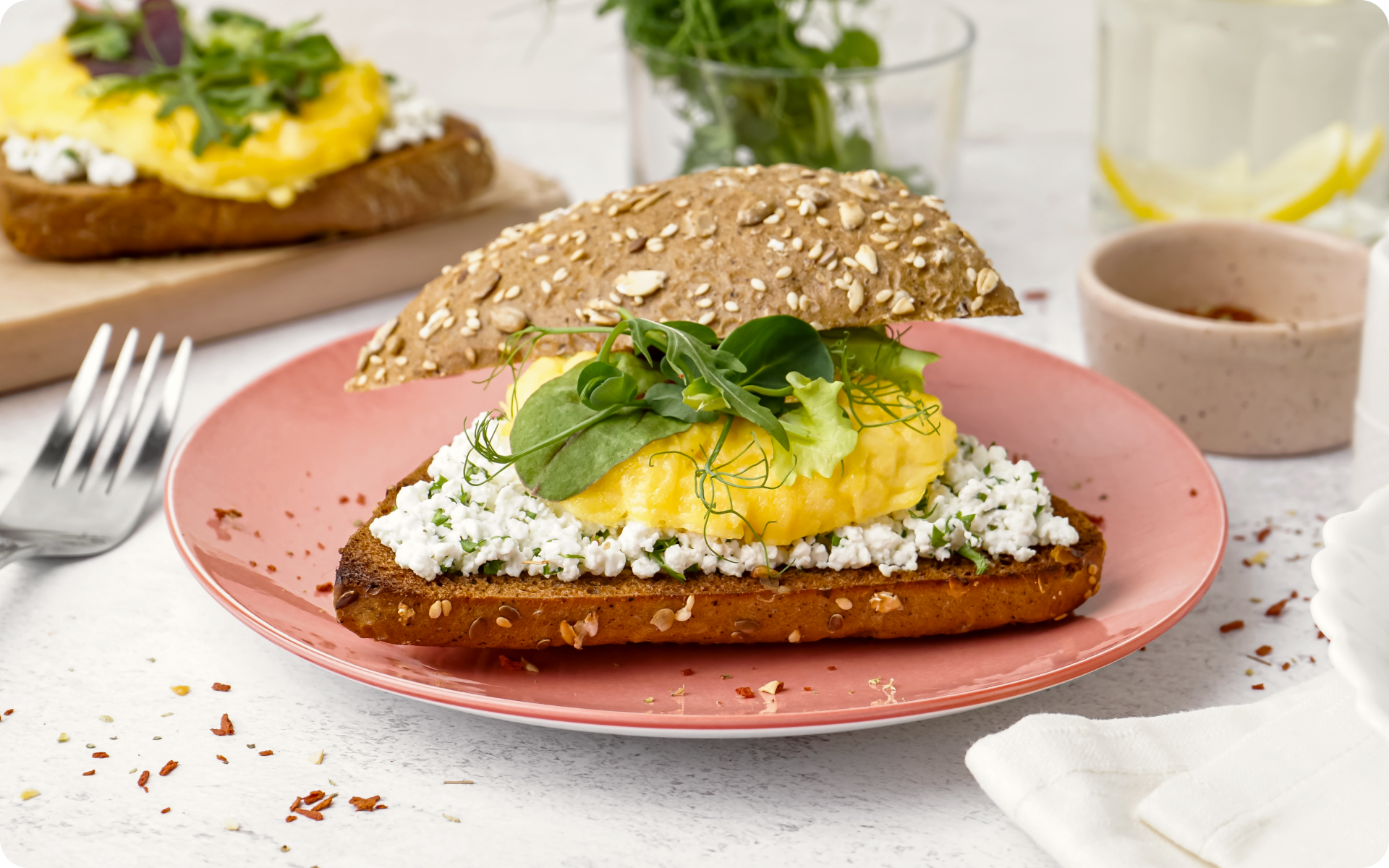Different people have different weight goals. While some want to build muscle and increase their body mass, others want to shed pounds ASAP. When it comes to meal plans, there are many options available, but how do you know which one works for you?
One popular meal plan you could consider is the 3,000-calorie-per-day plan. However, some questions you’ll often encounter are: Can eating 3,000 calories a day lead to weight loss or weight gain? Who should consume 3,000 calories a day? Is it healthy to eat 3,000 calories a day?
As with any meal plan, this works differently for different people. For some, the 3,000-calorie meal plan will help them add weight, but for others, it helps them lose it. The basic principle at play here is the calorific deficit, i.e if you use more calories than you consume, you’ll shed weight. If the opposite happens, i.e. you eat more than you burn, you’ll gain weight.
In this article, we’ll take a look at everything a 3,000-calorie-a-day meal plan entails.
What Is the 3,000-Calorie-a-Day Meal Plan?
The 3,000-calorie daily meal plan is a meal plan that has gained popularity among individuals with high energy expenditure needs, such as athletes, bodybuilders, or those who engage in intense physical activities. The plan is designed to meet the substantial calorie requirements that are necessary for muscle building and maintenance, or for athletes who are looking to sustain high-performance levels. Its key components often include:
High Protein Intake: Adequate protein is essential for muscle repair and growth, in addition to promoting a positive nitrogen balance.
Complex Carbohydrates: To fuel intense workouts and replenish glycogen stores, the plan includes complex carbohydrates from sources such as whole grains, fruits, and vegetables.
Healthy Fats: This includes sources such as avocados, nuts, and olive oil to provide a calorie-dense option for sustained energy and overall health.
This leads to:
Muscle Development: Tailored to individuals with high energy expenditure needs, it prioritizes protein intake to facilitate muscle repair and growth, which is essential for athletes and bodybuilders.
Intense Energy Demands: Packed with complex carbohydrates and healthy fats, it caters to the heightened energy requirements of those who engage in rigorous physical activities, helping to sustain their endurance and performance.
Frequent Eating: The plan involves multiple meals and snacks throughout the day, which ensures a steady nutrient supply for optimal absorption and sustained energy levels.
This meal plan’s popularity stems from its effectiveness in supporting muscle development and recovery, and meeting the heightened energy demands of active lifestyles. It’s important to personalize the plan based on individual goals, activity levels, and metabolic rates. Consulting a nutritionist will ensure the plan is aligned with specific needs and promotes overall well-being.
If you tend to let yourself off the hook, raise the white flag when things get tougher than you expected, send yourself on an unconscious binge-eating trip – BetterMe app is here to help you leave all of these sabotaging habits in the past!
Who Should Eat 3,000 Calories a Day?
There are several factors that determine the number of calories you need per day, including: (1)
- Gender – Men require more calories in a day than women. Adult males require between 2,000 and 3,000 calories in a day, while females require 1,600 to 2,400 calories a day, although these numbers can vary between individuals
- Height – Taller people require more calories to maintain their weight than shorter people.
- Age – The older you get, the fewer calories you require. This is because your body uses fewer calories when it’s at rest when you’re older than when you were younger.
- Activity – This refers to what you do during the day. Highly active people require more calories than less active people. This is because calories are to humans like fuel is to a vehicle. A vehicle that travels far will require more fuel than a vehicle that’s just driving through the neighborhood.
- Weight goals – People whose goal is to gain weight need to consume more calories than they use, while people who want to lose weight need to consume fewer calories than they use.
The 3,000-calorie-a-day diet is a high-calorie diet and is recommended for:
- People who want to gain weight
- Highly active people
- Athletes (2)
- Pregnant women
How Do You Know How Many Calories You Use in a Day?
It’s important to know how many calories you use in a day to know which food plan will work for you. You shouldn’t dedicate yourself to a food plan that doesn’t help you attain your weight goals. If you want to know how many calories you use in a day, you need to know your Basal Metabolic Rate (BMR) and your activity factor. (3)
Basal Metabolic Rate (BMR)
This is an estimate of how many calories you would burn if you were to do nothing but rest for a full day (24 hours). It’s the minimum amount of energy your body needs to keep functioning normally. BMR basically includes the energy needed for breathing, pumping blood, and keeping your heart beating. You can get this figure at your gym by conducting an InBody test run, estimate it using a scientific formula such as the Harris-Benedict or Mifflin-St. Jeor, or use an online calculator that does the math for you. (4)
Activity Factor
Your activity factor is the amount of energy you burn from your daily activities, including your job, exercise, and sports you play. You can find out your activity factor by wearing a heart rate monitor or a workout watch. There are also ways you can estimate it based on how active you normally are.
How Do You Figure out How Much Energy You’re Expending?
When you add your Basal Metabolic Rate (BMR) to your activity factor, you get your Total Daily Energy Expenditure (TDEE). This is how many calories you expend in a normal day doing all your normal activities.
For example, if your Basal Metabolic Rate (BMR) is 1,200 and your activity factor is 1,000, your Total Daily Energy Expenditure (TDEE) is:
1,200 + 1,000 = 2,200
If your goal is to gain weight, you need to eat 500 to 1,000 more calories than your Total Daily Energy Expenditure (TDEE). If your plan is to lose weight, you need to eat fewer calories than your TDEE.
Read more: Kimchi: Calories, Nutrition, and Health Benefits
What Are Some Reasons for Gaining Weight?
There are several reasons why someone would want to gain weight. Let’s take a closer look at why people are motivated in this direction.
1. You’re underweight
While many people struggle with being overweight, some people are underweight and need to gain weight. How do you know if you’re underweight?
If you have a body mass index (BMI) below 18.5, then you’re considered to be underweight by most standards. This is because this is the amount that is estimated to be less than the body mass needed to sustain optimal health. That being said, BMI is not always the best indicator of health status (5).
Health Problems of Being Underweight
High chances of early death: A recent study showed that the health of underweight males is associated with a 140 percent greater risk of early death, while for women it is 100 percent. This factor is even greater for obese people (6).
Leads to low immunity: Being underweight can impair your immune system and increase your risk of getting infections. (7)
Some reasons why a person could be underweight include:
- They may have an eating disorder, such as anorexia nervosa.
- Underlying thyroid problems. Hyperthyroidism can boost high metabolism and cause unhealthy weight loss.
- Diabetes. Type one diabetes is known to lead to severe weight loss
- Cancer.
- A disease such as HIV/AIDS
- Recent illness or period of limited food intake
If you’re underweight, it’s a good idea to visit your doctor or an expert in that particular field as they can help identify the cause of your underweight condition and direct you as to how to gain weight.
2. You want to gain muscles
Another reason to gain weight is if you want to gain muscles. This is mostly the case for athletes and bodybuilders. To do this, you need to eat more calories and exercise more to provide fuel for your muscles.
3. You want to look better
Some people may pursue weight gain for aesthetic reasons as they desire a fuller or more muscular physique. These people cannot be rightfully added as athletes or individuals with higher energy needs. They’re motivated by a sole desire to improve their physical appearance.
According to the 2020-2025 Dietary Guidelines for Americans (8), men between the ages of 15 and 35 who are active need at least 3,000 calories a day to maintain a healthy weight. In this case, “active” means that they do physical activity equal to walking more than 3 miles a day at a brisk pace.
How Can You Follow a 3000-Calorie Diet?
In order for a diet to be effective, you need nutrients from carbohydrates, proteins, and fats. Approximately 45-65% of total calories should come from carbs, 20-35% from fats, and the rest from protein. However, individual needs can vary (9).
One thing you need to know is how many calories are in a gram of each of these macronutrients. One gram of proteins and carbohydrates contains four calories, while a gram of fats contains nine calories. That being said, you can calculate how many grams of each macronutrient you should take.
For carbohydrates (60%)
60 percent of 3,000 calories is equivalent to 1,800 calories. As every four calories are equivalent to 1 gram of carbs, 1,800 calories are equal to 450 grams of carbohydrates.
For fats (30%)
30 percent of 3,000 calories is equivalent to 900 calories. As every nine calories are equivalent to 1 gram of fats, 900 calories are equal to 100 grams of fats.
For proteins (10%)
10 percent of 3,000 calories is equivalent to 300 calories. As every four calories are equivalent to 1 gram of proteins, 300 calories are equivalent to 75 grams of proteins. If you are particularly active, you may require more protein than this to help you gain weight and muscle. You can use these percentages as a starting point to develop your own goals.
BetterMe app is a foolproof way to go from zero to a weight loss hero in a safe and sustainable way! What are you waiting for? Start transforming your body now!
Some more liberal estimates include the following calorie split:
-
Protein (15-25%)
You should aim for 1.6-2.2 grams of protein per kilogram of body weight. Incorporate lean meats, fish, poultry, eggs, and plant-based protein sources such as beans and tofu.
-
Carbohydrates (45-65%)
Select complex carbs such as whole grains, fruits, vegetables, and legumes to sustain energy levels. Limit refined sugars.
-
Fats (20-35%)
Include healthy fats from sources such as avocados, nuts, seeds, and olive oil. These support hormone production and overall well-being. (10)
The meal distribution should look like this:
Breakfast: Protein-rich with whole grains.
Lunch: Balanced mix of protein, carbs, and fats.
Dinner: Include lean protein, vegetables, and healthy fats.
Snacks: Nutrient-dense choices such as Greek yogurt, fruits, or nuts.
Hydration
You should consume ample water and consider electrolyte-rich beverages, particularly if you’re physically active.
Foods to Eat in Order to Maintain a 3,000-Calorie Diet
As this is a high-calorie diet, you may be tempted to eat unhealthy food to get to the level of 3,000 calories a day. Although highly processed refined foods may be sweeter and higher in calories, they lack important nutrients. You should try to stick to whole unprocessed or minimally processed foods as much as possible.
Here are some healthy foods you should include:
Proteins
You should include both animal-based proteins and plant-based proteins. Examples of animal-based proteins include:
- Fish
- Turkey
- Salmon
- Eggs
- Beef
Examples of plant-based proteins include:
- Peas
- Lentils
- Chickpeas
- Peanuts
- Spirulina
- Quinoa
- Chia seeds
- Hemp seeds
Dairy
You should include different types of dairy products such as Greek yogurt, natural cheese, milk, and similar products.
Fats and oils
Fats from foods such as almonds, olive oil, and peanut butter should be included.
Fruits
This goes without saying. Incorporate different types of fruits into your diet. Add apples, avocados, bananas, oranges, berries, and similar produce.
Vegetables
Vegetables are also important and have high nutritional values. Add kale, spinach, cabbage, and broccoli to your diet.
Which Foods Should You Avoid?
- Fried foods. These include French fries, onion rings, and donuts.
- Fast foods. Yes, this includes that double-patty cheeseburger and pepperoni pizza.
- Foods with a lot of sugar and soft drinks. Avoid candy, sodas, ice creams, and chocolates.
- Refined carbs that come in the form of your favorite cookies, pastries, sugary cereals, and the like.
How Can You Divide Your 3,000 Calories?
In order to consume 3,000 calories of healthy foods, you need to divide the foods in a manner that is reasonable and achievable. One approach to consuming 3,000 calories is to consume 3 meals and 2 snacks per day.
You should have foods in the following measurements:
- Ten ounces of grains: An ounce of grain is equivalent to one slice of bread, or half a cup of cooked pasta, rice, or cereal. It also counts as one ounce of ready-to-eat cereal (11).
- Four cups of vegetables: One cup of vegetables is equivalent to two cups of leafy salad greens or one cup of 100 percent vegetable juice (12).
- Two and a half cups of fruits: One cup of fresh fruit is equal to half a cup of dried fruit or one cup of 100% fruit juice (13
- Three cups of dairy: One cup of dairy counts as one cup of milk, one cup of yogurt, one cup of fortified soy beverage, one and a half ounces of natural cheese, or two ounces of processed cheese (14).
- Seven ounces of protein foods: One ounce of protein foods counts as one ounce of cooked lean meats, poultry, or seafood. It also counts as one tablespoon of peanut butter, a quarter cup of cooked beans or peas, or half an ounce of nuts or seeds (15).
Sample Meal Plan for 3,000 Calories a Day
Although we’ve given you the measurements of each food type, here are examples of daily food meal plans that constitute 3,000 calories for people of different weights, weight goals, genders, heights, ages, body fat levels, and activity levels. You can eat the snacks between breakfast and lunch, between lunch and supper, or after supper.
Meal Plan One
Characteristics of the individual:
- Female
- 5. 7 feet tall
- 176 lbs
- 25 years
- High body fat percentage
- Moderately active
Total calories: 3,001
Breakfast (689 calories)
- Hawaiian pineapple egg scramble (one serving)
- Strawberries (two cups)
Ingredients for Hawaiian pineapple egg scramble:
- 1 tbsp olive oil
- 2 oz honey ham
- ½ cup pineapple chunks
- 1 extra-large egg
- 9 tbsp egg white
- 2 oz Swiss cheese
Number of calories of each macronutrient in one serving:
Total calories: 596.4
Carbs: 19. 4g
Fat: 36.2g
Protein: 47.9g
Strawberries
Number of calories for each macronutrient per 2 cups:
Total calories: 92.2
Carbs: 22.1g
Fat: 0.9g
Protein: 1.9g
Lunch (760 calories)
- Corn tuna salad ( two servings)
- Rice cake with cheese (two servings)
Ingredients for corn tuna salad
- 2 cans tuna
- 2 tbsp light mayonnaise
- 1 can (12 oz) yields corn
Number of calories for each macronutrient per 2 servings:
Total calories: 505
Carbs: 34.5g
Fat: 12.7g
Protein: 69.2g
Ingredients for rice cake with cheese:
- 4 rice cakes
- 1 oz cheddar cheese
- 2 dash pepper
Number of calories for each macronutrient per 2 servings:
Total calories: 254.9
Carbs: 29.8g
Fats: 10.6g
Protein: 9.8g
Dinner (858 calories)
- Breakfast burrito
- Fast and easy spinach with shallots
Ingredients for the breakfast burrito
- 2 tortillas
- 4 large eggs
- 6 large egg whites
- 2 leaves outer lettuce
- 4 tbsp refried beans
- 2 tbsp shredded cheddar cheese
- ½ cup salsa
Number of calories for each macronutrient per 2 servings:
Total calories: 804.1
Carbs: 67.5g
Fat: 30g
Protein: 62.9g
Ingredients for fast and easy spinach with shallots:
- ¼ tbsp olive oil
- ¼ shallot
- ¼ package (10 oz) spinach
- ¼ dash salt
- ¼ dash pepper
Number of calories for each macronutrient per serving:
Total calories: 53.9
Carbs: 4.4g
Fat: 3.7g
Protein: 2.3g
Snack one (360 calories)
Vegan cinnamon bun smoothie
Ingredients:
- 2 medium bananas
- 2 cups almond milk
- 1 tbsp cinnamon
- ½ tsp vanilla extract
- 1 tsp maple syrup
Number of calories for each macronutrient per 2 servings:
Total calories: 360
Carbs: 76.7g
Fat: 5.6g
Protein: 4.5g
Snack two
Grapes
Number of calories for each macronutrient per 1 cup:
Total calories: 104.2
Carbs: 27.3g
Fat: 0.2g
Protein: 1.1g
Cheese slices
Number of calories for each macronutrient per 2 servings:
Total calories: 230
Carbs: 0.8g
Fat: 19.2g
Protein: 13.6g
Meal Plan Two
Characteristics of the individual:
- Male
- Planning to build muscles
- 6 feet
- 154 lbs
- 25 years
- Medium body fat percentage
- Very active
Total calories: 3,084
Breakfast (774 calories)
Pastrami and cheese roll
Ingredients:
- 2 hamburger or hotdog rolls
- 2 tbsp butter
- 4 oz beef pastrami
- 2 oz Colby cheese
Number of calories of each macronutrient in two servings:
Total calories: 773.8
Carbs: 46.3g
Fat: 45.8g
Protein: 44.4g
Lunch (712 calories)
Tuna salad wrap
Ingredients:
- 1 medium red bell pepper
- 1 cucumber
- 1 ear, medium yield corn
- ¼ cup shredded lettuce
- 2 tortillas
- 1 can (12.5 oz) drained tuna
Number of calories for each macronutrient per 2 servings:
Total calories: 712.1
Carbs: 84.7g
Fat: 10.5g
Protein: 75.3g
Dinner (900 calories)
- Stuffed chicken burrs
- Zucchini spears with parmesan
Ingredients for stuffed chicken burrs:
- 5 ⅓ oz chicken breast
- ⅝ cup tomatoes
- ⅓ cup tomato sauce
- 11/16 tbsp dry taco seasoning mix
- 2 tortillas
- 3/16 cup shredded cheddar cheese
- 1 cup shredded lettuce
- ⅓ medium red bell pepper
- ½ cup chopped onions
Number of calories for each macronutrient per 2 burritos:
Total calories: 840.6
Carbs: 106.5g
Fat: 21.4g
Protein: 55.2g
Ingredients for zucchini spears with parmesan:
- ⅔ large zucchini
- 3/16 tsp salt
- 1 tbsp parmesan cheese
Number of calories for each macronutrient per serving:
Total calories: 59.2
Carbs: 6.9g
Fat: 2.2g
Protein: 4.7g
Snack one (370 calories)
- Mixed greens with olive oil and lemon salad dressing
- Banana pineapple “ice cream”
Ingredients for mixed greens with olive oil and lemon salad dressing:
- ½ oz field green salad mix
- 1 clove garlic, minced
- 1/16 tsp pepper
- ¼ tsp salt
- 1/16 cup olive oil
- ⅛ cup lemon juice
Number of calories for each macronutrient per serving:
Total calories: 133.4
Carbs: 3.6g
Fat: 13.6g
Protein: 0.5g
Ingredients for banana pineapple “ice cream”:
- 2 medium bananas
- ⅓ cup pineapple, crushed, sliced, or in chunks
Number of calories for each macronutrient per serving:
Total calories: 236.3
Carbs: 60.7g
Fat: 0.8g
Protein: 2.9g
Snack two
Almonds
Number of calories for each macronutrient per 1 cup:
Total calories: 328.3
Carbs: 12.2g
Fat: 28.3g
Protein: 12g
Meal Plan Three
Breakfast (approximately 600 calories):
- Scrambled eggs with spinach and feta (3 eggs)
- Whole grain toast (2 slices)
- Avocado (half)
Snack (approximately 300 calories):
Greek yogurt with mixed berries and honey
Lunch (approximately 700 calories):
- Grilled chicken breast
- Quinoa salad with mixed vegetables
- Olive oil dressing
Snack (approximately 400 calories):
Handful of almonds and walnuts
Dinner (approximately 800 calories):
- Baked salmon
- Sweet potato wedges
- Steamed broccoli and carrots
- Brown rice
Evening Snack (approximately 200 calories):
Cottage cheese with pineapple chunks
Meal Plan Four (emphasis on high protein and healthy fats)
Breakfast (approximately 700 calories):
- Protein smoothie (protein powder, almond milk, banana, almond butter)
- Oatmeal with chia seeds and berries
Snack (approximately 300 calories):
- Hard-boiled eggs (2)
- Mixed nuts
Lunch (approximately 700 calories):
- Turkey and avocado wrap with whole grain tortilla
- Mixed green salad with olive oil dressing
Snack (approximately 400 calories):
- Greek yogurt with sliced almonds and a drizzle of honey
Dinner (approximately 800 calories):
- Beef stir-fry with broccoli, bell peppers, and brown rice
- Quinoa and black bean salad
Evening Snack (approximately 100 calories):
- Cottage cheese with sliced peaches
It should be noted that these calorie estimates are rough approximations and actual values may vary based on specific ingredients, portion sizes, and preparation methods. Adjustments can be made based on individual dietary needs and goals.
Read more: Intermittent Fasting Macros – Managing Calories the Smart Way!
FAQs
How many calories should I eat a day?
The number of calories you should eat in a day varies for different individuals. There are factors that help determine the number of calories you should eat in a day, such as your gender, age, weight goal, height, and daily activities.
Who should consume 3,000 calories a day?
3,000 calories a day should be consumed by highly active people, athletes, and people who want to gain weight. If you’re not sure of the number of calories you should consume in a day, you should consult a professional for better guidance.
Can you lose weight if you eat 3,000 calories a day?
Yes, you can. Although it’s not easy. In order to lose weight from eating 3,000 calories a day, your body needs to use more than 3,000 calories in a day. For highly active people, 3,000 calories may very well be a caloric deficit and result in weight loss (17).
Is 3,000 calories enough to bulk?
Whether 3,000 calories is sufficient to support a successful bulk is dependent on individual factors such as:
- Metabolism
- Activity level
- Body composition
For many people, particularly those who have higher energy requirements due to intense physical training or a naturally fast metabolism, a 3,000-calorie daily intake can serve as a solid starting point for a bulking phase. It generally provides a surplus, which will encourage muscle growth and weight gain.
However, effectiveness varies from person to person and some people may require more or fewer calories. Some factors you should consider include:
- Regular monitoring of progress
- Adjusting calorie intake based on weight changes
- Ensuring a balance of macronutrients for successful bulking
- Progressive overload in strength training to build muscle
Consulting a nutritionist or fitness professional can give you personalized guidance based on individual requirements and goals.
What does 3,000 kcal look like?
A 3,000 kcal daily intake should be a substantial and well-balanced collection of meals and include various food groups and essential nutrients. There should be a focus on portion sizes to hit the target number of calories.
Here’s a breakdown of what 3,000 kcal looks like in terms of meal planning:
Breakfast: Kickstart your day with a hearty meal, such as scrambled eggs with spinach and whole-grain toast, complemented by avocado.
Mid-Morning Snack: A nutritious Greek yogurt parfait layered with mixed berries and a drizzle of honey
Lunch: A satisfying grilled chicken breast paired with quinoa salad, packed with vegetables and dressed with olive oil, will provide essential protein and healthy fats.
Afternoon Snack: You can keep your energy levels up with a handful of almonds and walnuts, which will offer a mix of healthy fats and protein.
Dinner: A nourishing dinner can consist of baked salmon, sweet potato wedges, steamed vegetables, and brown rice.
Evening Snack: End the day with a calcium-rich cottage cheese and pineapple combination.
With adequate portions, a comprehensive approach will ensure a well-rounded 3,000 kcal intake.
How can a vegetarian eat 3,000 calories a day?
For vegetarians, it can be difficult to consider such meal plans. However, in order to achieve a 3,000 kcal daily calorie intake, you must strategically plan and utilize diverse nutrient-rich ingredients. You should consider the following breakdown:
- Plant-Based Protein: Incorporate protein sources such as tofu, tempeh, lentils, and chickpeas into meals as an alternative to meat-based proteins.
- Whole Grains: Opt for whole grains such as quinoa, brown rice, and oats that provide complex carbohydrates and additional nutrients.
- Healthy Fats: Include sources such as avocados, nuts, and olive oil for essential fats and additional calories.
- Dairy or Plant-Based Alternatives: Utilize dairy or plant-based alternatives such as almond or soy milk to enhance meals and contribute to overall caloric intake.
- Snacking: Choose nutrient-dense snacks such as mixed nuts, seeds, and Greek yogurt with berries to boost calories between meals.
- Diverse Fruits and Vegetables: Consume fruits and vegetables for essential vitamins and minerals.
- Meal Diversity: Plan varied meals that include different vegetables, legumes, and grains to achieve a well-rounded nutritional profile.
This approach will ensure a nutritionally diverse 3,000-calorie vegetarian diet that aligns with individual dietary preferences.
The Bottom Line
Eating 3,000 calories a day can result in weight gain because it is more than an average individual needs in a day. However, some people, such as athletes, actually need this amount of calories or even more. It’s advisable to consult a professional before you start following this meal plan. A professional is the best person to guide you toward a meal plan that works best for you. If you can’t afford a professional, there are many applications that can help you with this – a great example of which is the BetterMe app.
DISCLAIMER:
This article is intended for general informational purposes only and does not serve to address individual circumstances. It is not a substitute for professional advice or help and should not be relied on for making any kind of decision-making. Any action taken as a direct or indirect result of the information in this article is entirely at your own risk and is your sole responsibility.
BetterMe, its content staff, and its medical advisors accept no responsibility for inaccuracies, errors, misstatements, inconsistencies, or omissions and specifically disclaim any liability, loss or risk, personal, professional or otherwise, which may be incurred as a consequence, directly or indirectly, of the use and/or application of any content.
You should always seek the advice of your physician or other qualified health provider with any questions you may have regarding a medical condition or your specific situation. Never disregard professional medical advice or delay seeking it because of BetterMe content. If you suspect or think you may have a medical emergency, call your doctor.
SOURCES
- Body mass index and the risk of infection – from underweight to obesity (2017, ncbi.nlm.nih.gov).
- Bhargava, M., & Tandon, B. R. (2015). Comorbidity of non-communicable diseases and tuberculosis. Lung India, 32(4), 303-306. doi:10.1186/s12939-015-0125-8
- Brown, K. S., & Wilking, H. (2019). The role of nutrition in tuberculosis control. The Proceedings of the Nutrition Society, 78(1), 79-87. doi:10.1017/S0029665118000455
- Dietary Guidelines for Americans (2020, asphn.org).
- Chen, W., & Yang, M. (2021). Effect of nutritional status on the immune response to tuberculosis. Frontiers in Immunology, 12, 604997. doi:10.3389/fimmu.2021.604997
- Davis, J. M., Murphy, E. A., & Thompson, C. A. (2008). The role of micronutrients in immune function. Clinical Nutrition, 27(6), 813-837. doi:10.1016/j.clnu.2008.03.009
- 3,000 Calorie Meal Plan (n.d., eatthismuch.com)
- Body mass index and the risk of infection – from underweight to obesity (2017, ncbi.nlm.nih.gov)
- Jin, Y., Sun, W., & Zhu, X. (2021). Nutrition and tuberculosis: A clinical update. Annals of translational medicine, 9(7), 1423-1441. doi:10.21037/atm-21-2383
- MyPlate. Grains. Retrieved from https://www.myplate.gov/eat-healthy/grains
- MyPlate. Fruits. Retrieved from https://www.myplate.gov/eat-healthy/fruits
- MyPlate. Vegetables. Retrieved from https://www.myplate.gov/eat-healthy/vegetables
- MyPlate. Dairy. Retrieved from https://www.myplate.gov/eat-healthy/dairy
- MyPlate. Protein Foods. Retrieved from https://www.myplate.gov/eat-healthy/protein-foods
- Schneider, R. A., & Peeke, P. M. (2012). Diet and the immune system: 10 lessons learned from HIV/AIDS. Immunology and Cell Biology, 90(8), 823-831. doi:10.1038/icb.2012.29
- Sun, Q., Zhou, Y., Wu, Y., et al. (2022). Malnutrition is associated with the increased risk of active pulmonary tuberculosis in adults: A meta-analysis. International Journal of Clinical and Experimental Medicine, 15(7), 5558-5566. doi:10.3892/ijcem.2022.5699
- Weng, T., & Pan, Q. (2020). Nutritional influences on immune function and its implications for chronic diseases. Annual Review of Nutrition, 40(1), 383-412. doi:10.1146/annurev-nutr-082418-054504














